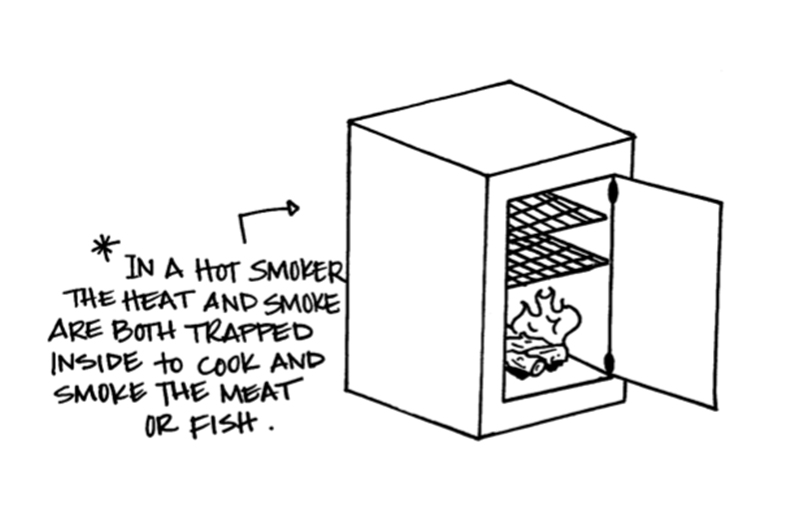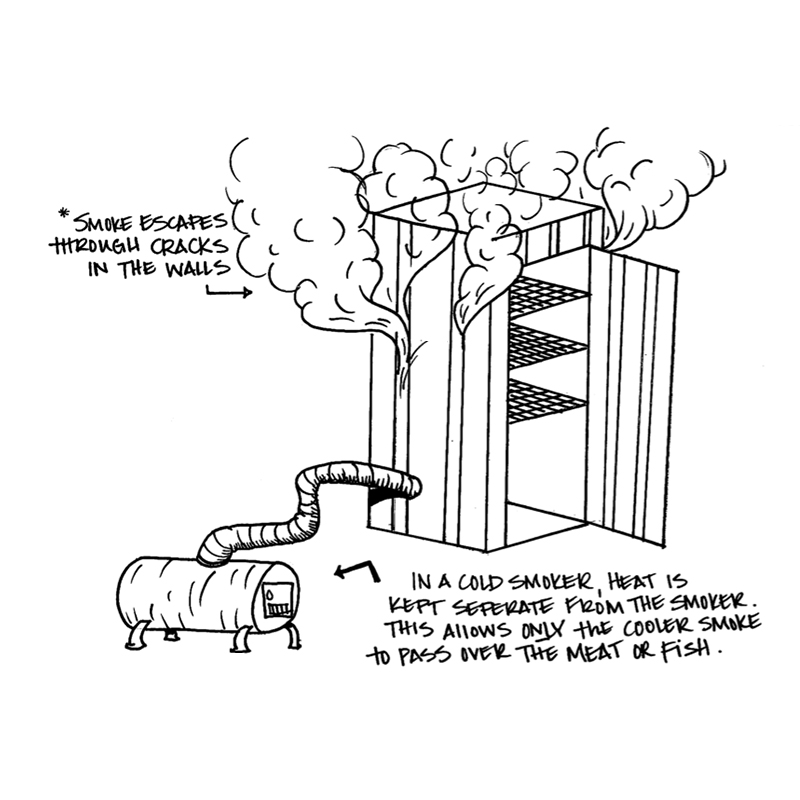Building an Alaskan Smokehouse the Kilcher Way
Smokehouses can be found on the grounds of any Alaskan homestead. Even so, there is plenty of variety to be found, with everything from store-bought metal smokers to homemade smokers made of reclaimed lumber, antiquated machinery, and more. No matter what they’re made of, the purpose is the same: to preserve fish and meat for the long winters ahead, which can stretch up to eight months in Alaska.

Deciding Between Hot and Cold
When you’re thinking about building a smokehouse of your own, the first consideration is whether you want a hot smoke or a cold smoke. There are distinct advantages to both, and they produce very different results. For instance, cold smoking is generally better for raw fish. There’s plenty to consider, but the essential difference is that cold smoking keeps the meat in a separate chamber from the flame, only letting smoke in, while in hot smoking the meat is kept in the same chamber as the flames.

What Materials Will I Need?
In my family, we typically built our smokehouses out of rough-cut slabs salvaged from pallets. For the stoves, we would use old wood stoves or barrel stoves to keep the cost down. They’re tools after all, not art pieces. We simply need something to get the job done; there’s no need to invest as much as you would into a piece of furniture or even a furnace inside your home.
There are a number of different ways to capture the necessary smoke as well, ranging from the simplicity of a campfire to something more permanent, such as a weber barbeque. Above that, you’ll need some sort of rack to rest the meat on, such as an old oven rack.
The True Purpose of Smoking
It’s important to remember that the real purpose of smoking is a means to preserve fish and meat, not to add a smoky flavor to the meat. By drying it and keeping insects away you can store it through the winter. Nowadays, people everywhere love smoked meat for the flavor and Alaskan smoked salmon has achieved a truly legendary status, but Native Alaskans have been smoking meat for generations by hanging it from wooden poles suspended over long fire pits.
Common Mistakes to Avoid
There were a few years where we put entirely too much brine on the fish and didn’t wash it off before putting it in the smoker, so when they came out of the smoker we had to wash it all off to make it bearable. Luckily, these days there’s a lot less trial and error. Thanks to some recipes Eve has developed we tend to get it right the first time. If you interested in our family recipes, we have a book called Homestead Kitchen: Stories and Recipes from Our Hearth to Yours that might be of interest.
One more note – If you catch a lot of freshwater fish, it’s important to remember that most of them can’t be eaten raw, salmon especially. Saltwater fish usually can be of course, which is why so many people eat sushi.
Final Remarks
We hope you’ll find this information useful as you look into building your own smokehouse. Not only are they a necessity on the homestead, but they can really make the experience more enjoyable as well. I still remember when I was a child, my family brought a large smokehouse with us to the beach and we spent several weeks there catching and smoking fish non-stop, eating our fill as soon as they were finished. Hopefully, your family will have those wonderful memories too.
